As of 2015 there are approximately 5200 known archaeological sites in the province. They range in age from nearly 9000 years ago to the 20th century. Click the links below to learn a little more about the sites.
- All Archaeology Sites
- Mi’kmaq Sites
- Maritime Archaic Sites
- Pre-Inuit Sites
- Intermediate Period Sites
- Recent Period Sites
- Beothuk Sites
- Inuit Sites
- Innu Sites
- European Sites
- Beothuk Sites
All Archaeological Sites
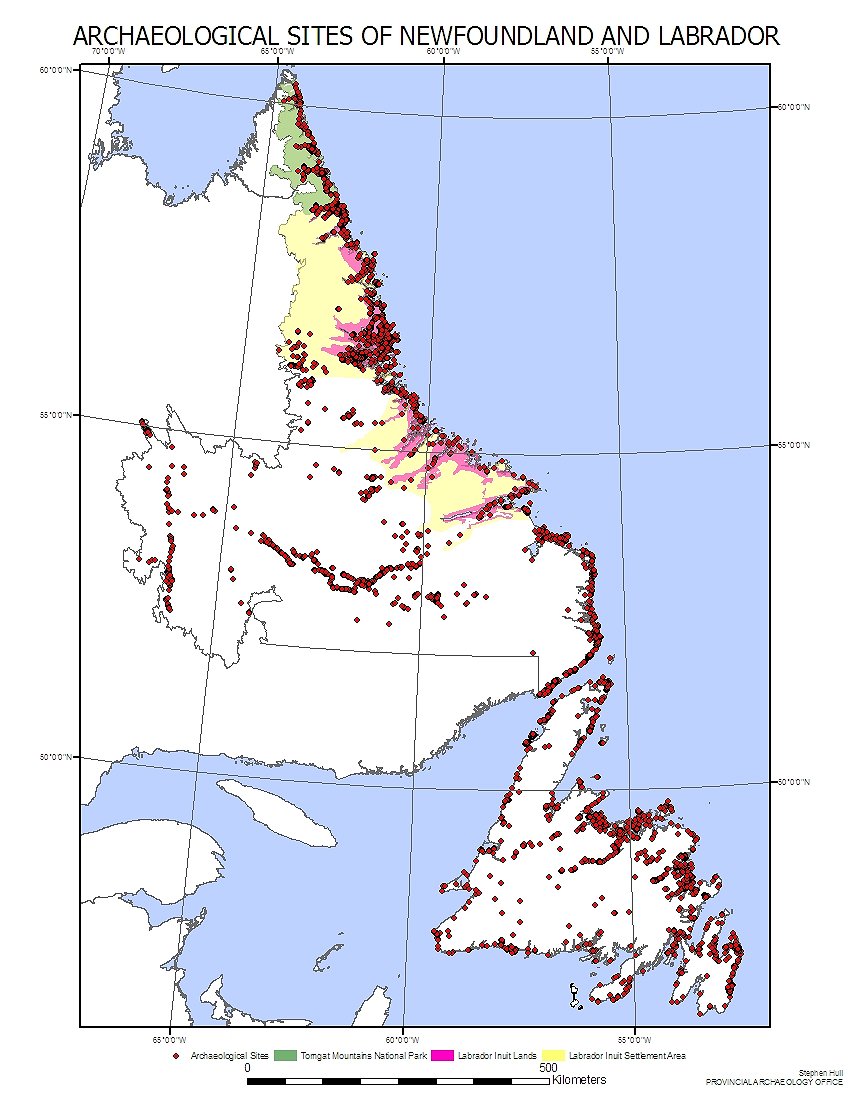
Pre-Inuit Sites
The term Pre-Inuit is used to refer to the peoples of the Arctic who lived before the Thule, the direct ancestors of the Inuit who now inhabit the Canadian north. Pre-Inuit peoples may be remotely related to the Inuit, but they are not the direct ancestors of any modern Arctic people.
Modern populations are sometimes divided into different groups for simplicity sake based on various cultural traits. Archaeologists sometimes do this with archaeological cultures. For example, in this province the Pre-Inuit people are represented by the Pre-Dorset, Groswater and Dorset based on differing cultural traits. The Pre-Inuit sites on the south coast of the island and on the islands of Saint Pierre and Miquelon represent the farthest south these groups are known to have reached.
There are nearly 900 known Pre-Inuit archaeological sites in the province. To learn more about the Pre-Inuit there are several webpages you can go to:
Inuit Sites
- Inuit living along the coast of Labrador are the direct descendants of a pre-European contact hunting society that spread across Canada from Alaska and centered on capturing massive bowhead whales. This culture, called Thule by archaeologists, quickly adapted to the mixed arctic and sub-arctic conditions found in the Labrador region. By the early post-contact period the Inuit had spread as far south as the Northern Peninsula of Newfoundland.
- There are nearly 800 known Thule and Inuit archaeological sites in the province. To learn more about the Thule and Inuit please go to:
- Newfoundland and Labrador Heritage: Inuit
- Newfoundland and Labrador Heritage: Thule
- Virtual Museum of Labrador
- Recently the Inuit of Newfoundland and Labrador signed a land claims agreement with the provincial government resulting in the formation of an Inuit government, Nunatsiavut Government, in parts of Labrador and control of their own lands. You can learn more about this agreement by going here or directly to the Nunatsiavut Government website.
Mi’kmaq Sites
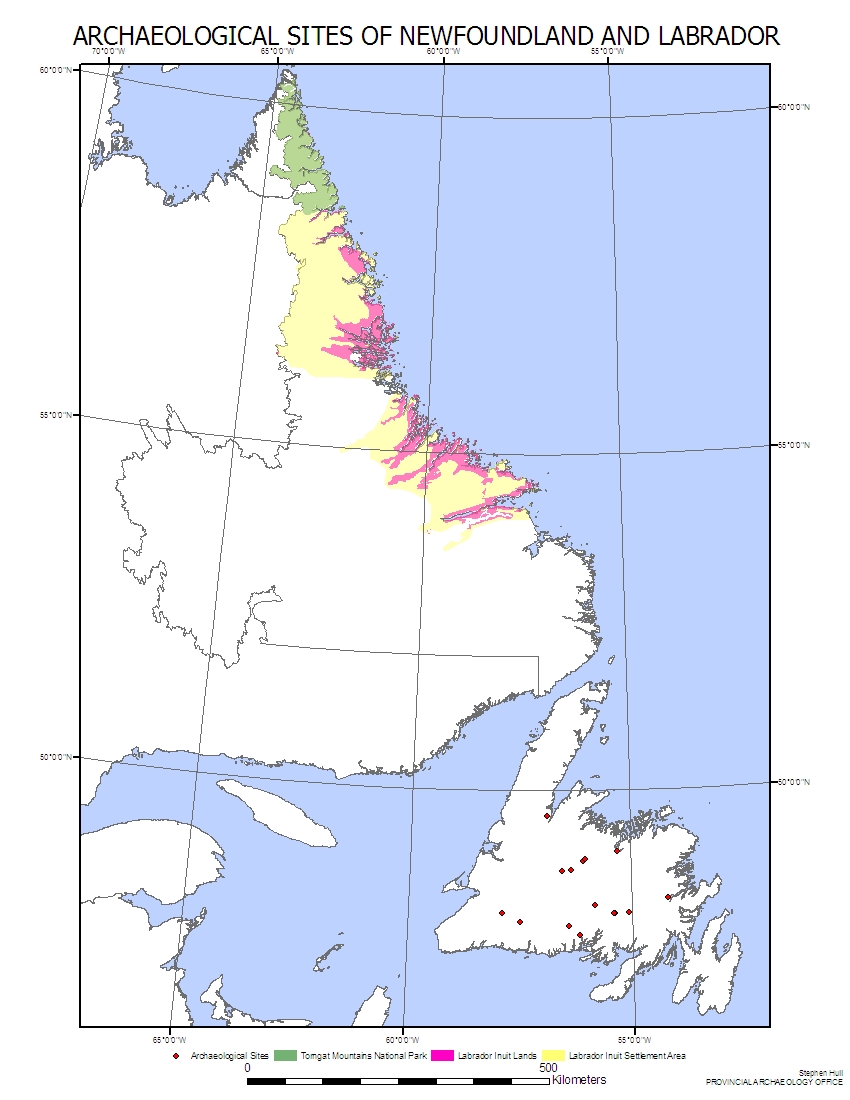
Historians and archaeologists differ as to when the Mi’kmaq first came to Newfoundland. Newfoundland Mi’kmaq oral tradition holds that the Mi’kmaq were living in Newfoundland prior to European contact. There is some historical evidence that the Mi’kmaq were living in Newfoundland by the 16th century, and by the 17th century there are increasing references to the Mi’kmaq in the historical record.
There are 17 known post-contact period Mi’kmaq archaeological sites in the province. To learn more about the Mi’kmaq, click here.
Intermediate Period Sites
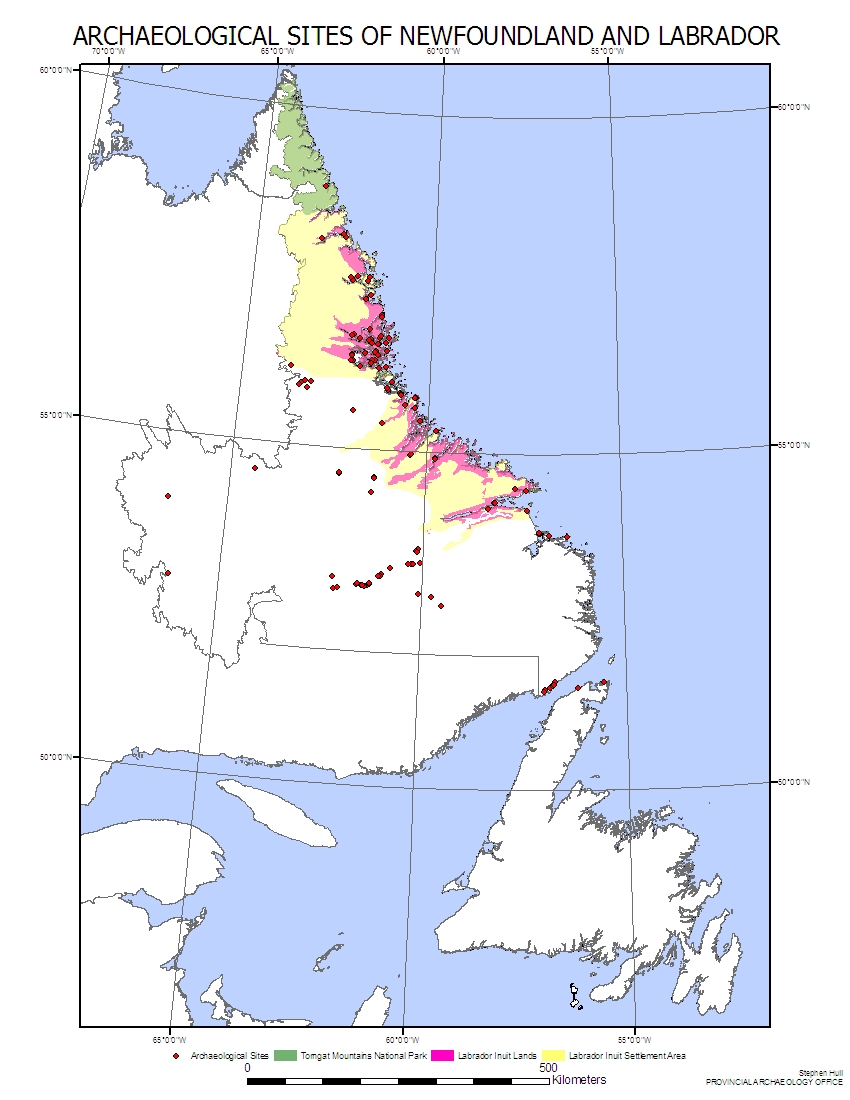
- Intermediate is a term used to identify a time frame in mostly southern and central Labrador between about 3,500 and 1,500 years ago. Intermediate signifies their historical position between the earlier Maritime Archaic people and the Recent Period people who came after them. The people of the Maritime Archaic, Intermediate and Recent periods were part of the First Nations family, which is seperate from Pre-Inuit peoples whose distribution included all of the Labrador coast at the same time.
- There are nearly 200 known Intermediate Period archaeological sites in the province. To learn more about the Intermediate Period you can go to:
- Newfoundland and Labrador Heritage
- A History of the Native people of Canada
- Inside Newfoundland and Labrador Archaeology: Intermediate Indians Part A & Part B
Innu Sites
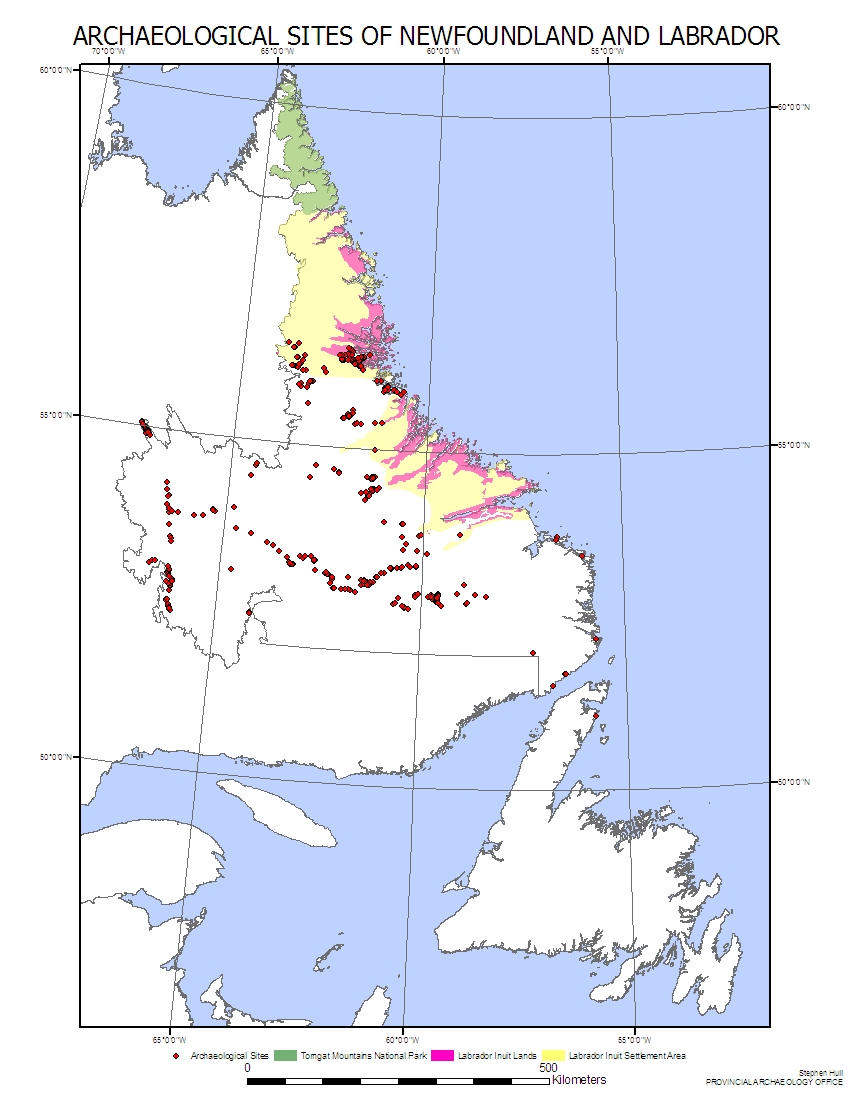
- The Innu, formerly known as the Naskapi-Montagnais Indians, are an Algonkian-speaking people whose homeland (Nitassinan) is the eastern portion of the Québec-Labrador peninsula. The word “Innu” means “human being”, and the Innu language is called “Innu-aimun.” Today there are over 16,000 Innu who live in eleven communities in Québec and two in Labrador.
- There are nearly 500 known Innu archaeological sites in the province. To learn more about the Innu you can go to:
- Newfoundland and Labrador Heritage
- Innu Nation
- tipatshimuna – Innu stories from the land
- Virtual Museum of Labrador
Maritime Archaic Sites
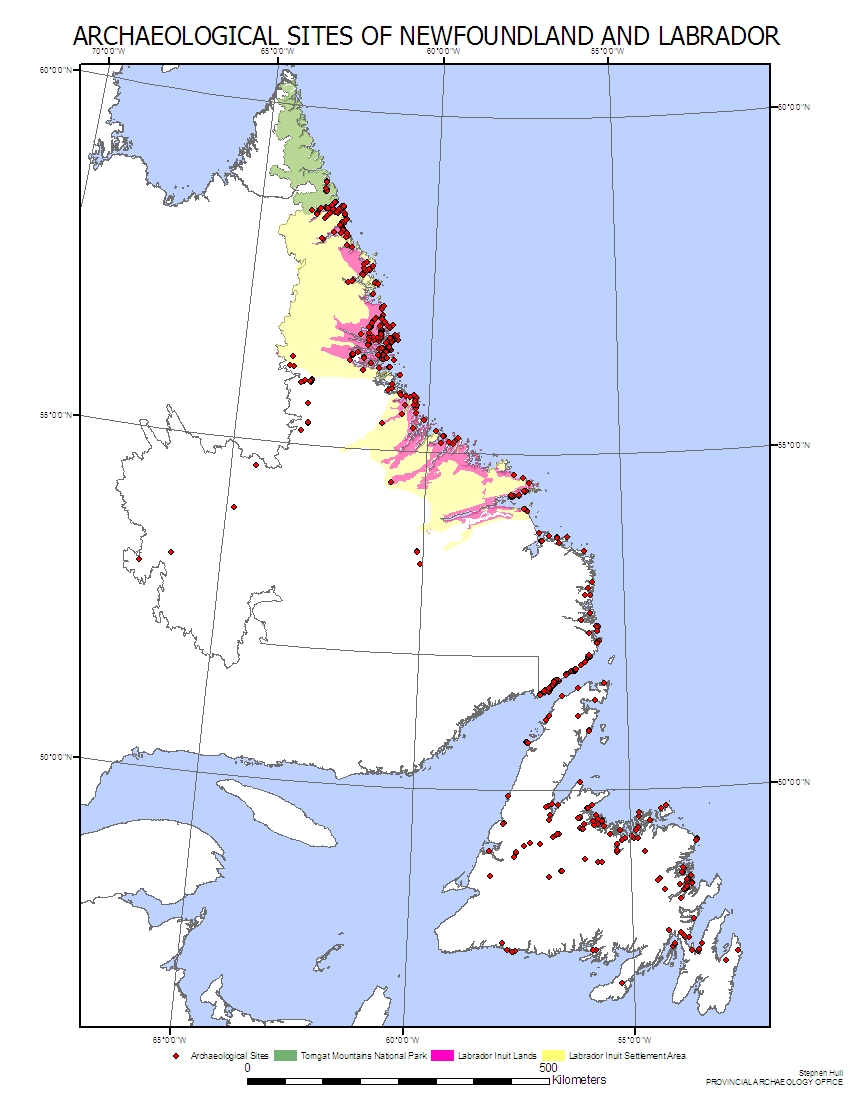
- The Maritime Archaic tradition was named after the discovery of a 4,000-year-old site at Port au Choix in northwestern Newfoundland. Its name derives from two words: “Archaic”, which refers to an ancient pre-agricultural, or hunting and gathering, way of life found throughout eastern North America and “Maritime” for the important role that the sea and its resources played in the lives of Newfoundland and Labrador’s first people.
- Some of the more interesting Maritime Archaic sites include:
- the L’Anse Amour burial mound in southern Labrador
- the Maritime Archaic site at Nulliak, northern Labrador that has approximately 20 longhouses, some of which are nearly 100 m long
- the massive burial site at Port au Choix
- There are more than 600 known Maritime Archaic archaeological sites in the province. To learn more about the Maritime Archaic, you can go at least two places on the Canadian Museum of Civilization webpage. On the latter site the Maritime Archaic is known by the name Maritime Culture. You can also go to the Newfoundland and Labrador Heritage webpage to learn about the Maritime Archaic culture, the A History of the Native people of Canada or here.
Recent Period Sites
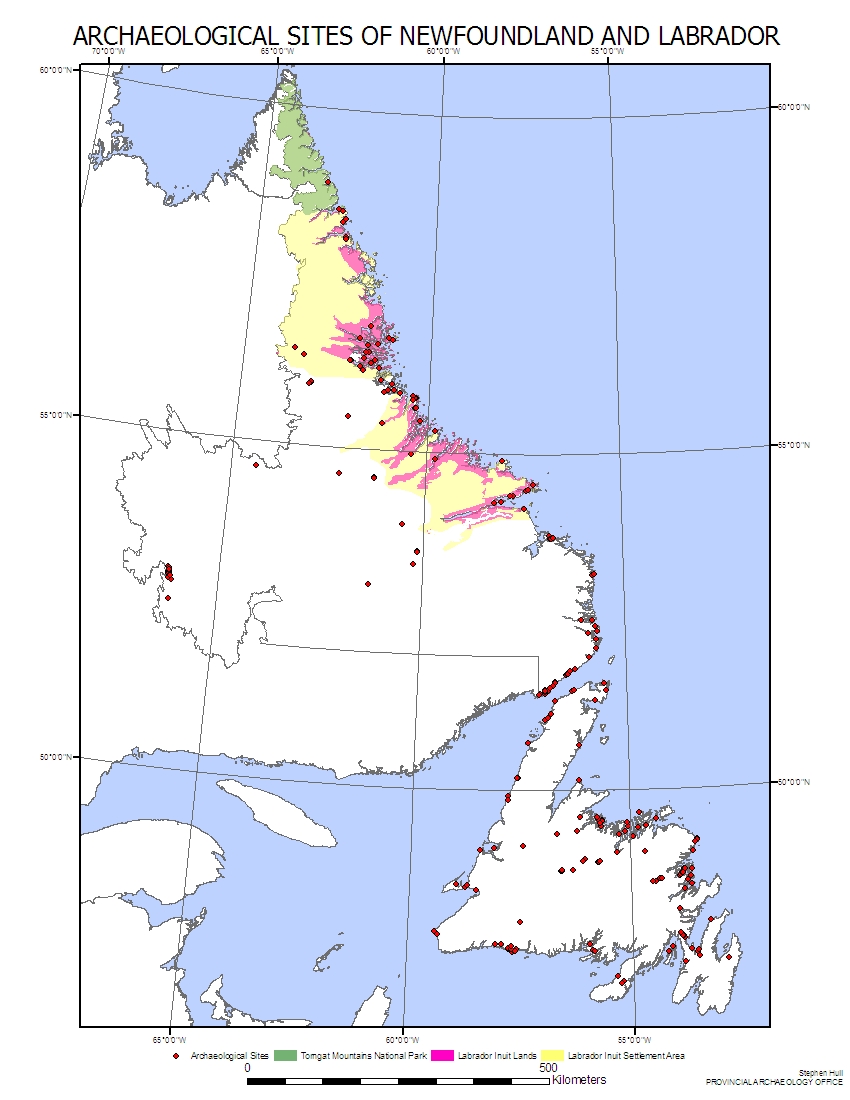
- In Labrador archaeologists have recognized two Recent Period First Nations populations, the earlier Daniel Rattle complex and the later Point Revenge complex. These are pre-European contact First Nations groups. Archaeologists usually name such groups after the geographic location of the first site where they were recognized archaeologically. The Daniel Rattle and Point Revenge complexes are thought to be essentially the same cultural group, however, their culture changed through time to the point where archaeologist have given it a different name. On the island archaeologists recognized three Recent Period First Nations populations, the Cow Head, Beaches and Little Passage complexes. The latter two complexes are believed to be the ancestors of the Beothuk.
- There are more than 200 known Recent Period archaeological sites in the province. To learn more about them you can go to:
- Archaeological Survey of Canada
- Newfoundland and Labrador Heritage
- A History of the Native people of Canada
- Inside Newfoundland and Labrador: Recent Period Tradition Newfoundland & Labrador
European Sites
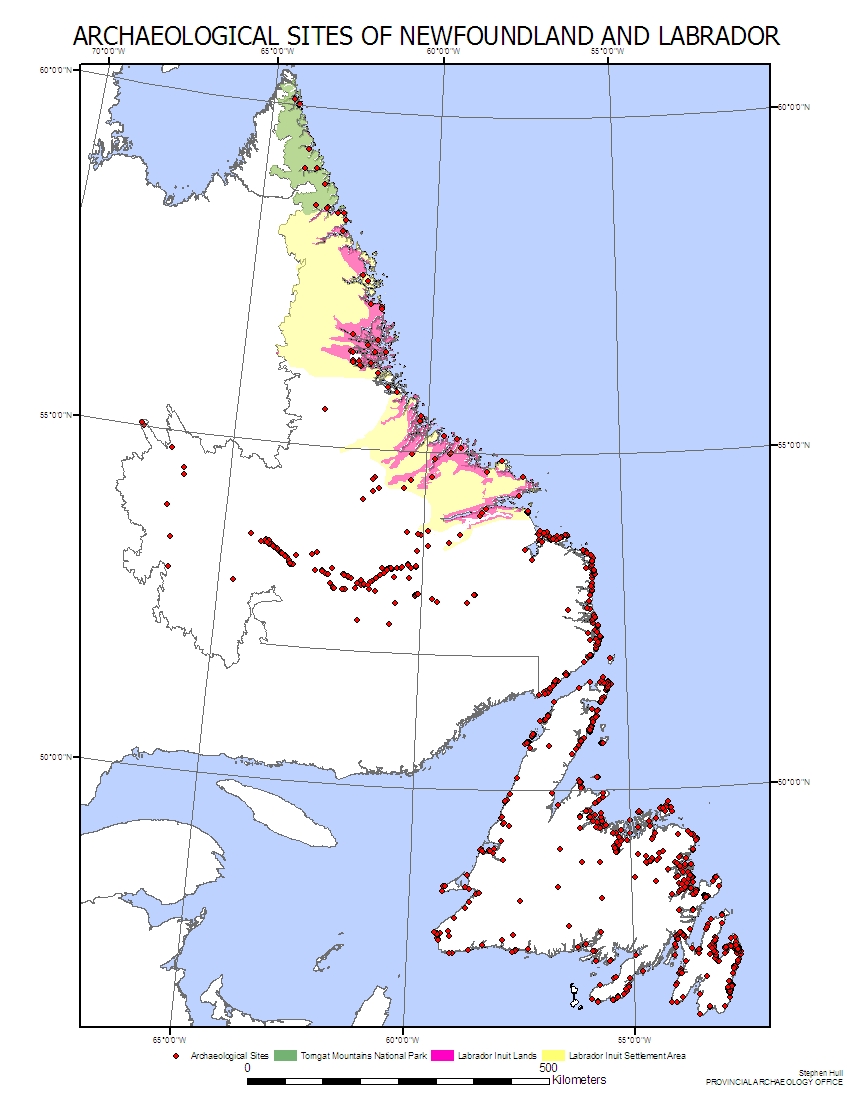
- The region of Newfoundland and Labrador was the first stretch of North America’s Atlantic coastline to be explored by Europeans. The Norse arrived from Greenland about 1000 A.D. and established a settlement here during the following century. There is legendary evidence that other Europeans chanced upon the island during the Middle Ages. John Cabot certainly reconnoitered the area and claimed it for the Tudor monarchs of England in 1497, and West European fishermen began to visit the Grand Banks during the summer months on a regular basis shortly thereafter.
- There are nearly 1000 European archaeological sites in the province. To learn more about the Europeans you can go to:
- Newfoundland and Labrador Heritage
- Colony of Avalon
- Baccalieu: Crossroads for Culture
- Baccalieu Trail Archaeology
- L’Anse aux Meadows
- Labrador Virtual Museum
- Labrador Coastal Drive
Beothuk Sites
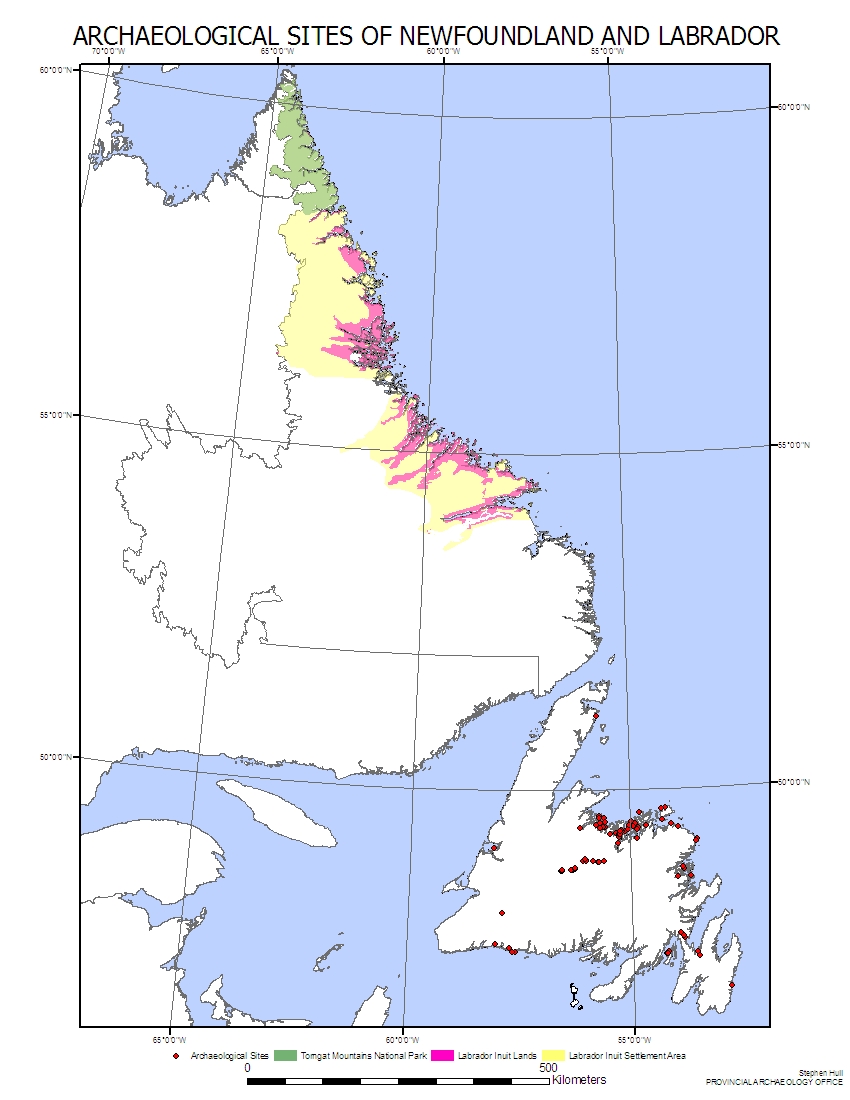
- The Beothuks are the aboriginal people of the island of Newfoundland. They were Algonkian-speaking hunter-gatherers who probably numbered less than a thousand people at the time of European contact. The Beothuks are the descendants of a Recent Indian culture called the Little Passage Complex.
- There are nearly 100 known Beothuk archaeological sites in the province. To learn more about the Beothuk you can go to:
- Newfoundland and Labrador Heritage
- Archaeological Survey of Canada
- Baccalieu: Crossroads for Culture
- Baccalieu Trail Archaeology and in particular Russell’s Point
- Colony of Avalon: Beothuk Archaeology
- Inside Newfoundland and Labrador Archaeology: Beothuk